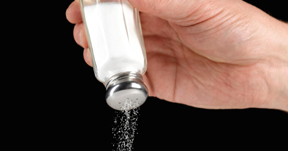 NEW YORK: New York City’s Health Department wants all chain restaurants to warn customers about products that are high in salt.
NEW YORK: New York City’s Health Department wants all chain restaurants to warn customers about products that are high in salt.
The department voted to consider the proposal at a meeting of the Board of Health that all chain restaurants add a salt-shaker-like symbol on menus next to products that contain more than the recommended daily limit. That’s 2,300 milligrams of sodium, about 1 teaspoon of salt.
Now a public comment period begins, and a final vote could come as soon as September and the warnings by December.
Overconsumption of sodium increases the risk of high blood pressure, which can lead to heart attack and stroke. The average American consumes about 3,400 milligrams of sodium each day; only about 1 in 10 Americans meets the 1 teaspoon guideline.
New York City would become the first U.S. city with the labels if the measure passes.
Even items that sound healthy, like a salad, can contain more sodium than the daily recommended limit, said Dr. Sonia Angell, a deputy commissioner for the city’s Department of Health and Mental Hygiene.
For example, at one New York City restaurant, a smokehouse turkey panini contains three times the amount of sodium as a roasted turkey and avocado bacon sandwich, Angell said.
Some board members suggested more than one warning label should be created: one for items above the daily recommended limit, and another for items that contain half of the daily recommended limit.
“One of the challenges is to identify at what level you want to give consumers information,” Angell said.
`It is absolutely irrefutable that 2,300 milligrams in one sitting is absolutely not compatible with anybody to maintain the limit.
Public health advocates hailed the proposal as a pioneering step to tackle a major problem. Salt producers called it off-base, and some restaurateurs said it would needlessly mire already burdened eateries in more bureaucracy. Burger King and Wendy’s have declined to comment, and McDonald’s hasn’t responded to a request for comment.
City Health Commissioner Dr. Mary Travis Bassett said it simply would give customers important information. Bassett said the board would consider the notion of more than one sodium warning label.
“High sodium levels are probably the biggest health problem related to our food supply,” said Michael Jacobson, executive director for the Center for Science in the Public Interest, a Washington-based advocacy group.
While he hailed New York’s proposal as “showing true leadership,” he also called it a conservative approach, given that items would get special labels only if they have a full day’s worth of sodium. A meal with even half that amount would still have too much salt, he said.
The head of the Salt Institute, a trade association for salt producers, called the proposal “misguided” and based on “faulty, incorrect government targets” discredited by recent research.
“They’re too low … and if followed, could actually harm people,” said the group’s president, Lori Roman.
Last year, an international study questioned the conventional wisdom that most people should cut back on salt, suggesting that the amount most folks consume is OK for heart health. The study followed 100,000 people in 17 countries and found that very high levels of salt were a problem, especially for people with high blood pressure, but too little salt also can do harm.
Other scientists fault the study and say most people still consume way too much salt.
Studies have found that the vast majority of dietary salt comes from processed and restaurant foods. The U.S. Food and Drug Administration has been pressing the food industry to reduce sodium content voluntarily and is working on new sodium guidelines.
Under former Mayor Michael Bloomberg, New York led development of salt-reduction targets for various table staples and got companies to start committing to them voluntarily, starting in 2010. -AP






